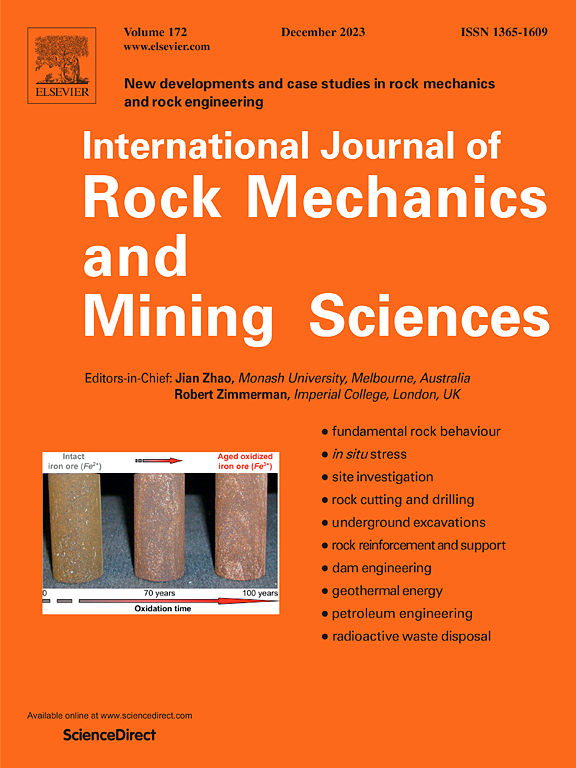注入流体条件下由断层破碎带粒径控制的断层滑移行为和摩擦稳定性
IF 7
1区 工程技术
Q1 ENGINEERING, GEOLOGICAL
International Journal of Rock Mechanics and Mining Sciences
Pub Date : 2024-09-28
DOI:10.1016/j.ijrmms.2024.105919
引用次数: 0
摘要
了解断层岩粒度在流体诱发断层滑移和破裂过程中的控制机制对于降低大规模流体注入带来的地震风险至关重要。在此,我们进行了实验室实验,以展示在流体注入情况下,断层岩颗粒大小对滑动行为、摩擦力和滑动模式的影响。我们的结果表明,冲沟的颗粒大小控制着断层滑动事件的发生,而初始断层滑动所需的流体压力与岩石颗粒大小呈负相关。岩石颗粒尺寸的增加会削弱断层,诱发断层滑动模式从蠕变到缓慢粘滑事件的转变,从而导致地震事件的发生。这些结果揭示了断层破碎带的粒度对注入流体作用下断层的滑移行为、滑移模式和摩擦特性具有潜在的主导控制作用,为研究断层滑移和地震事件提供了重要依据。本文章由计算机程序翻译,如有差异,请以英文原文为准。
Fault slip behaviors and frictional stability controlled by particle size of fault gouge under fluid injection
Understanding the control mechanism of fault rock particle size in fluid-induced fault slip and rupture processes is crucial for mitigating the seismic risks associated with large-scale fluid injection. Here, we conducted laboratory experiments to present the effects of fault rock particle size on slip behavior, friction, and slip modes under fluid injection. Our results demonstrate that the particle size of the gouge controls the initiation of fault slip events and that the fluid pressure required for the initial fault slip is negatively correlated with the rock particle size. The increase in rock particle size can weaken the faults and induce the transition of the fault slip mode from creep to slow stick-slip events, which leads to the occurrence of seismic events. These results reveal the particle size of fault gouge exerts a potentially dominant control on the slip behavior, slip modes, and frictional characteristics of faults under fluid injection, providing crucial insights into fault slip and seismic events.
求助全文
通过发布文献求助,成功后即可免费获取论文全文。
去求助
来源期刊
CiteScore
14.00
自引率
5.60%
发文量
196
审稿时长
18 weeks
期刊介绍:
The International Journal of Rock Mechanics and Mining Sciences focuses on original research, new developments, site measurements, and case studies within the fields of rock mechanics and rock engineering. Serving as an international platform, it showcases high-quality papers addressing rock mechanics and the application of its principles and techniques in mining and civil engineering projects situated on or within rock masses. These projects encompass a wide range, including slopes, open-pit mines, quarries, shafts, tunnels, caverns, underground mines, metro systems, dams, hydro-electric stations, geothermal energy, petroleum engineering, and radioactive waste disposal. The journal welcomes submissions on various topics, with particular interest in theoretical advancements, analytical and numerical methods, rock testing, site investigation, and case studies.

 求助内容:
求助内容: 应助结果提醒方式:
应助结果提醒方式:


